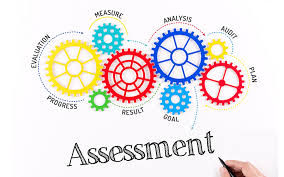Understanding Agentic Workflows in Business Automation
- enriquehowarth
- May 6
- 2 min read
In today’s fast-evolving digital landscape, agentic workflows are reshaping how businesses approach automation. These intelligent, autonomous systems go beyond traditional rule-based automation to dynamically adapt, learn, and make decisions based on context and goals. As enterprises seek ways to improve efficiency, scale faster, and reduce operational friction, agentic workflows offer a powerful evolution of automation that introduces a layer of decision-making and intent to routine tasks.

What Are Agentic Workflows?
Agentic workflows refer to workflows powered by AI agents that operate with autonomy and intent. These agents are not just task executors—they understand objectives, assess their environment, make informed decisions, and adapt to changing conditions. Unlike static automation where a set rule triggers a response, agentic workflows involve a loop of sensing, planning, and acting, much like a human would approach a task with goals in mind.
For instance, instead of just sending an invoice when a form is filled, an AI agent could detect anomalies, adjust messaging based on customer behavior, and initiate a follow-up sequence if no response is received. This shift from reactive to proactive automation makes businesses more responsive, resilient, and intelligent.
Why Agentic Workflows Matter
The core advantage of agentic workflows is autonomy. In complex environments like supply chain management, customer service, or compliance operations, manual intervention slows processes and creates bottlenecks. Agentic systems remove those barriers by making micro-decisions that humans don’t need to oversee, improving turnaround times and reducing errors.
Moreover, they foster continuous improvement. Since these workflows are often powered by machine learning, they learn from data and outcomes, optimizing future decisions. This learning capability sets agentic workflows apart from traditional workflow automation, which remains static unless manually updated.
Use Cases Across Industries
Customer Support: Virtual agents that not only answer queries but escalate issues based on tone, history, or urgency.
Procurement: Autonomous agents evaluate vendor performance, flag risks, and recommend alternatives in real time.
Finance: AI-driven workflows can audit expenses, detect fraud patterns, and automatically approve low-risk transactions.
HR: AI agents assess resumes, schedule interviews, and adapt hiring flows based on team feedback.
These examples highlight how agentic workflows bring flexibility and intelligence into systems that were once rigid and reactive.
Getting Started with Agentic Workflows
To implement agentic workflows, businesses should:
Identify repetitive decision-heavy processes that cause delays.
Choose a platform that supports AI agents or integrates with advanced workflow orchestration tools.
Start small, measuring performance and decision accuracy.
Scale gradually across departments as confidence in the system builds.
The future of automation lies not just in doing tasks faster, but in doing them smarter. Agentic workflows bring businesses closer to that reality—where automation doesn’t just follow rules but thinks and responds like a digital coworker.
SITES WE SUPPORT
SOCIAL LINKS



Comments